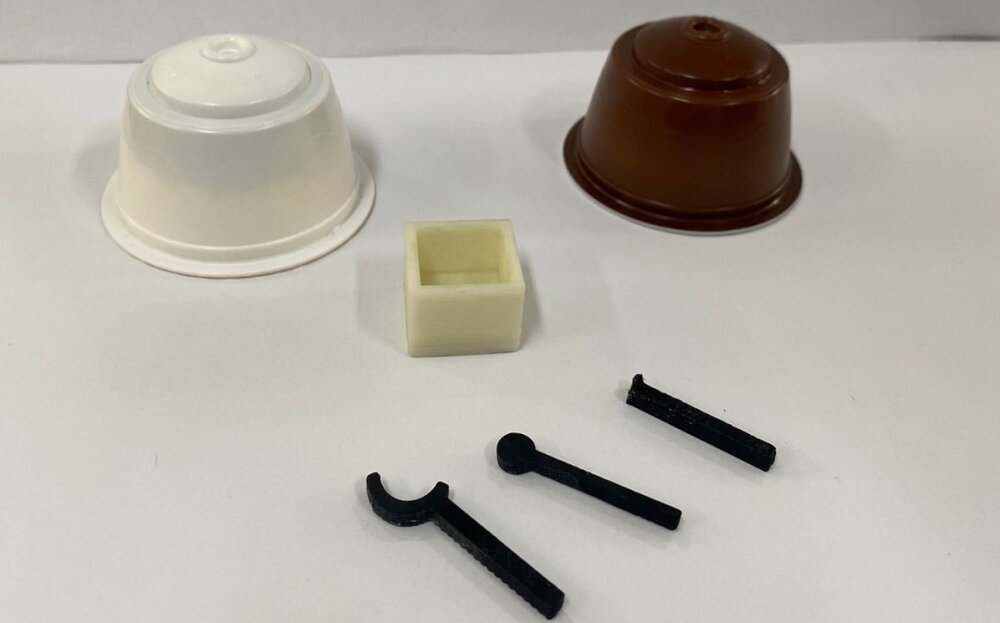A recent article in the ACS Sustainable Chemistry & Engineering journal reported that used coffee pods’ plastic can be recycled to create filament for 3D printers. The solution was successfully tested by research groups in Brazil at the Federal University of São Carlos (USFCar) and the State University of Campinas (UNICAMP) and in the UK at Manchester Metropolitan University (MMU). This recycling solution helps minimize the environmental impact of used coffee pods.
Waste Polylactic Acid for Filament Production
The researchers produced new conductive and non-conductive filaments from waste polylactic acid (PLA) from used coffee machine pods. The filaments have many applications, including conductive parts for machinery and sensors. The head of the Sensors, Nanomedicine and Nanostructured Materials Laboratory (LSNano) at UFSCar in Araras, São Paulo state, Bruno Campos Janegitz, said that the polymer base obtained from used pods can generate devices with a great deal of added value.
Circular Economy Example
Most coffee consumed in Brazil is low-quality robusta coffee, with a high proportion of defects and impurities disguised by high roasting of beans and plenty of sugar or sweetener in the cup. However, demand for gourmet and specialty coffees is steadily growing. Gourmet coffees score 75-80 on the scale used by the Brazilian Coffee Industry Association (ABIC), and specialty coffees must have a socio-environmental certification and score at least 80 on the scale used by the Brazilian Specialty Coffee Association (BSCA).
Portable electric espresso machines that use pods are also increasingly popular, but the problem with them is what to do with used pods. Although reusable pods exist, most consumers throw used pods into the garbage bin, especially if they are made of plastic. Calculations made by the São Paulo State Technological Research Institute (IPT) show that a cup of pod coffee can be as much as 14 times more damaging to the environment than a cup of filter coffee.
The researchers produced electrochemical cells with non-conductive filaments of PLA and electrochemical sensors with conductive filaments prepared by adding carbon black to the PLA. Carbon black is a form of carbon that results from incomplete combustion of hydrocarbons. The electrochemical sensors were used to determine the proportion of caffeine in black tea and arabica coffee.
The process is a good example of the circular economy, in which the waste produced by an economic activity is not treated as a problem that harms the environment but converted into resources to implement another activity. Production of filament is relatively simple. The non-conductive material is obtained by washing and drying PLA pods, followed by hot extrusion. To obtain the conductive material, carbon black is added before heating and extrusion. The extruded material is then cooled and spooled to produce the filament of interest.


Leave a Reply